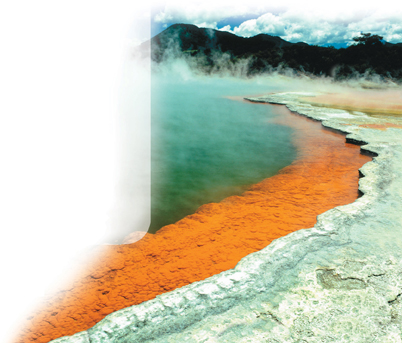
FIGURE 20–7 Typical Bacterial Structure A bacterium such as E. coli has the basic structure typical of most prokaryotes. E. coli also has an outer membrane composed of lipids. This outer membrane is not present in all bacteria. The micrograph shows E. coli undergoing binary fission, with pili visible.
ddBacteria The larger of the two domains of prokaryotes is the Bacteria. Bacteria include a wide range of organisms with lifestyles so different that biologists do not agree exactly how many phyla are needed to classify this group. Bacteria live almost everywhere. They live in fresh water, in salt water, on land, and on and within the bodies of humans and other eukaryotes. Figure 20–7 shows a diagram of Escherichia coli, a typical bacterium that lives in human intestines.
Bacteria are usually surrounded by a cell wall that protects the cell from injury and determines its shape. The cell walls of bacteria contain peptidoglycan—a polymer of sugars and amino acids that surrounds the cell membrane. Some bacteria, such as E. coli, have a second membrane outside the peptidoglycan wall that makes the cell especially resistant to damage. In addition, some prokaryotes have flagella that they use for movement, or pili (PY ly; singular: pilus), which in E. coli serve mainly to anchor the bacterium to a surface or to other bacteria.

FIGURE 20–8 Habitat for Archaea This hot spring in New Zealand is teeming with archaea that thrive at extremely hot temperatures.
Archaea Under a microscope, archaea look very similar to bacteria. Both are equally small, lack nuclei, and have cell walls, but there are important differences. For instance, the walls of archaea lack peptidoglycan, and their membranes contain different lipids. Also, the DNA sequences of key archaea genes are more like those of eukaryotes than those of bacteria. Based on these and other observations, scientists have concluded that archaea and eukaryotes are related more closely to each other than to bacteria.
Many archaea live in extremely harsh environments. One group of archaea produce methane gas and live in environments with little or no oxygen, such as thick mud and the digestive tracts of animals. Other archaea live in extremely salty environments, such as Utah's Great Salt Lake, or in hot springs where temperatures approach the boiling point of water.
 In Your Notebook Create a Venn diagram in which you compare and contrast the characteristics of bacteria and archaea.
In Your Notebook Create a Venn diagram in which you compare and contrast the characteristics of bacteria and archaea.
Table of Contents
- Formulas and Equations
- Applying Formulas and Equations
- Mean, Median, and Mode
- Estimation
- Using Measurements in Calculations
- Effects of Measurement Errors
- Accuracy
- Precision
- Comparing Accuracy and Precision
- Significant Figures
- Calculating With Significant Figures
- Scientific Notation
- Calculating With Scientific Notation
- Dimensional Analysis
- Applying Dimensional Analysis




